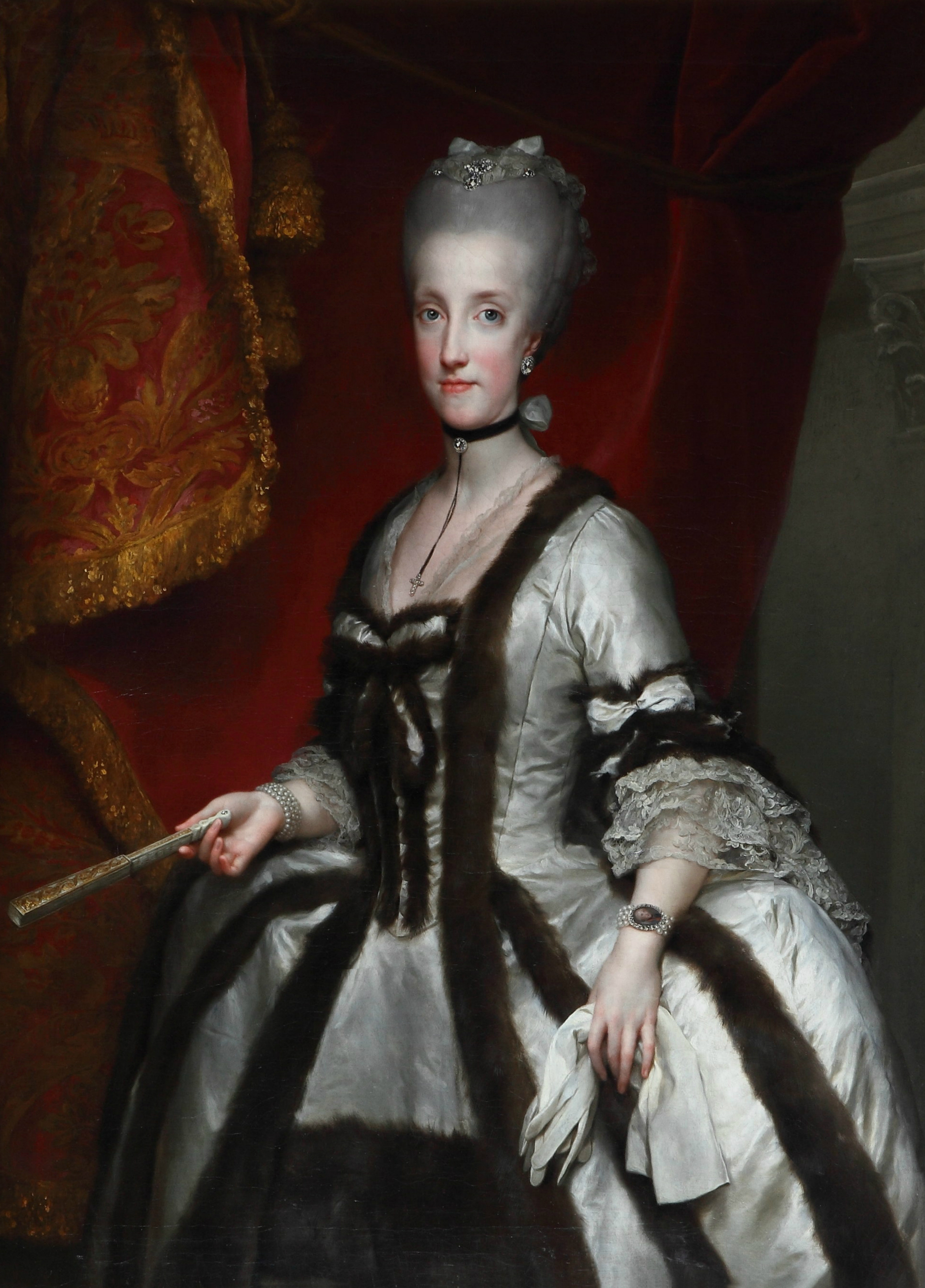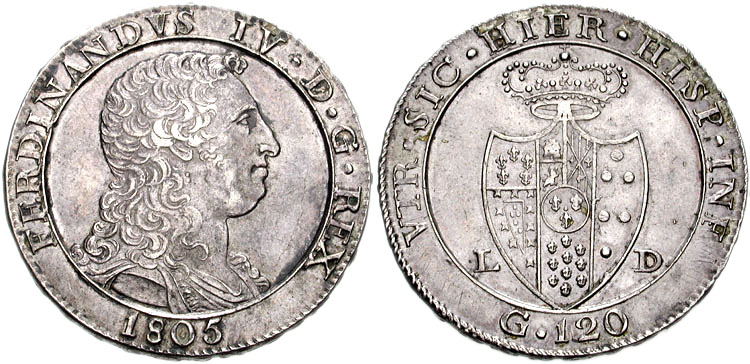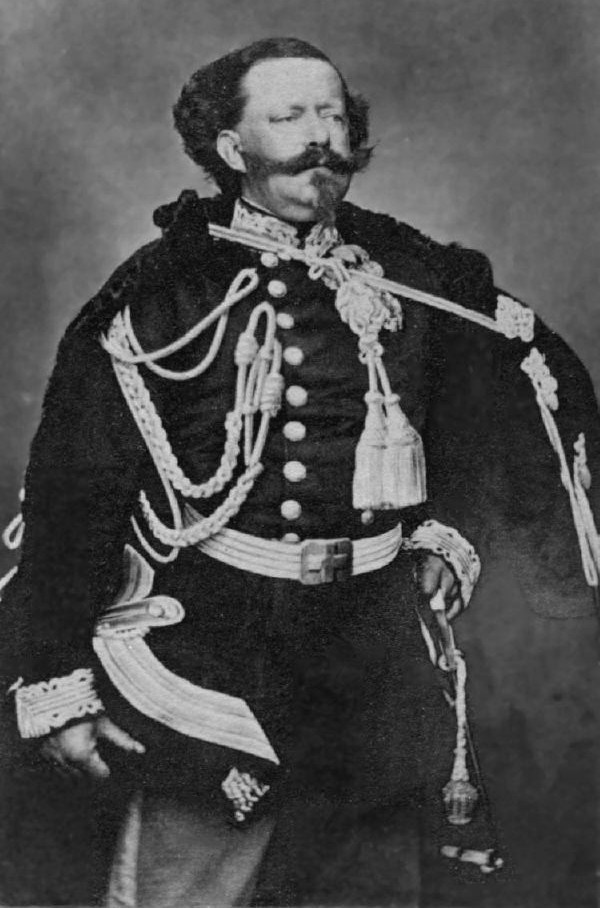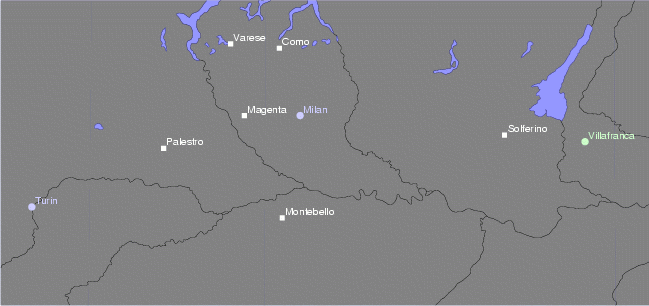|
Leopold II Of Tuscany
Leopold II( it, Leopoldo Giovanni Giuseppe Francesco Ferdinando Carlo, german: Leopold Johann Joseph Franz Ferdinand Karl, English: ''Leopold John Joseph Francis Ferdinand Charles''. (3 October 1797 – 29 January 1870) was Grand Duke of Tuscany from 1824 to 1859. He married twice; first to Maria Anna of Saxony, and after her death in 1832, to Maria Antonia of the Two-Sicilies. By the latter, he begat his eventual successor, Ferdinand. Leopold was recognised contemporarily as a liberal monarch, authorising the Tuscan Constitution of 1848, and allowing a degree of press freedom. The Grand Duke was deposed briefly by a provisional government in 1849, only to be restored the same year with the assistance of Austrian troops, who occupied the state until 1855. Leopold attempted a policy of neutrality with regard to the Second Italian War of Independence, but was expelled by a bloodless coup on 27 April 1859, just before the beginning of the war. The Grand Ducal family left for B ... [...More Info...] [...Related Items...] OR: [Wikipedia] [Google] [Baidu] |
Grand Duke Of Tuscany
The rulers of Tuscany varied over time, sometimes being margraves, the rulers of handfuls of border counties and sometimes the heads of the most important family of the region. Margraves of Tuscany, 812–1197 House of Boniface :These were originally counts of Lucca who extended their power over the neighbouring counties. *Boniface I, Margrave of Tuscany, Boniface I, 812–823 *Boniface II, Margrave of Tuscany, Boniface II, 828–834 *Aganus of Tuscany, Aganus, 835–845 *Adalbert I of Tuscany, Adalbert I, 847–886 *Adalbert II of Tuscany, Adalbert II the Rich, 886–915 *Guy of Tuscany, Guy, 915–929 *Lambert of Tuscany, Lambert, 929–931 House of Boso :These were the (mostly illegitimate) relatives of Hugh of Arles, King of Italy, whom he appointed to their post after removing the dynasty of Boniface *Boso of Tuscany, Boso, 931–936 *Humbert of Tuscany, Humbert, 936–961 *Hugh of Tuscany, Hugh the Great, 961–1001 House of Hucpold *Boniface, Count of Bologna, Boniface (I ... [...More Info...] [...Related Items...] OR: [Wikipedia] [Google] [Baidu] |
Giuseppe Bezzuoli
Giuseppe Bezzuoli (28 November 1784 – 13 September 1855) was an Italian painter of the Neoclassicism, Neoclassic period, active in Milan, Rome, and his native city of Florence. Biography He studied as a young man under Jean-Baptiste Desmarais at the Academy of Fine Arts of Florence, and afterward spent some time at Rome between 1813 and 1820. He became a candidate to the professorship of painting at the Academy of Fine Arts of Florence, Academy of Fine Arts of Florence after Pietro Benvenuti's death in 1844. His large picture in the Academy include ''The Entry of Charles VIII of France, Charles VIII into Florence'' (1822–1829). Some of his smaller works, such as ''The Galatea'' and the small copy of Raphael's ''School of Athens'' (1819), in the Galleria Tosio Martinengo at Brescia, give a more favorable idea of his talent. He painted one of the lunettes in the Tribune of Galileo at the Natural History Museum (La Specola Museum) in Florence, and the more important series of sce ... [...More Info...] [...Related Items...] OR: [Wikipedia] [Google] [Baidu] |
Gino Capponi
Marquis Gino Capponi (Florence, 13 September 1792 – Florence, 3 February 1876) was an Italian statesman and historian of a Liberal Catholic bent. Biography The Capponi was an illustrious Florentine aristocratic family, and is mentioned as early as 1250; it acquired great wealth as a mercantile and banking firm, and many of its members distinguished themselves in the service of the republic and the Medicis (see Piero Capponi), and later in that of the house of Lorraine. Gino was the son of the Marquis Pier Roberto Capponi, a nobleman greatly attached to the reigning grand duke of Tuscany, Ferdinand III and also son of , foundress of the Passionist Sister. When that prince was deposed by the French in 1799 the Capponi family followed him into exile at Vienna, where they remained until he exchanged his rights to the grand duchy for a German principality (1803). The Capponi then returned to Florence, and in 1811 Gino married the marchesina Giulia Vernaccia. Although the family ... [...More Info...] [...Related Items...] OR: [Wikipedia] [Google] [Baidu] |
Pope Pius IX
Pope Pius IX ( it, Pio IX, ''Pio Nono''; born Giovanni Maria Mastai Ferretti; 13 May 1792 – 7 February 1878) was head of the Catholic Church from 1846 to 1878, the longest verified papal reign. He was notable for convoking the First Vatican Council in 1868 and for permanently losing control of the Papal States in 1870 to the Kingdom of Italy. Thereafter he refused to leave Vatican City, declaring himself a " prisoner of the Vatican". At the time of his election, he was seen as a champion of liberalism and reform, but the Revolutions of 1848 decisively reversed his policies. Upon the assassination of his Prime Minister Rossi, Pius escaped Rome and excommunicated all participants in the short-lived Roman Republic. After its suppression by the French army and his return in 1850, his policies and doctrinal pronouncements became increasingly conservative, seeking to stem the revolutionary tide. In his 1849 encyclical '' Ubi primum'', he emphasized Mary's role in salvation. In 1 ... [...More Info...] [...Related Items...] OR: [Wikipedia] [Google] [Baidu] |
Marie Caroline Of Austria
Maria Carolina Louise Josepha Johanna Antonia (13 August 1752 – 8 September 1814) was List of consorts of Naples, Queen of Naples and List of Sicilian consorts, Sicily as the wife of King Ferdinand I of the Two Sicilies. As ''de facto'' ruler of her husband's kingdoms, Maria Carolina oversaw the promulgation of many reforms, including the revocation of the ban on Freemasonry, the enlargement of the navy under her favorite, Sir John Acton, 6th Baronet, Sir John Acton and the expulsion of Spanish influence. She was a proponent of enlightened absolutism until the advent of the French Revolution, when, in order to prevent its ideas gaining currency, she made Naples a police state. Born an archduchess of Austria, the thirteenth child of Empress Maria Theresa and Francis I, Holy Roman Emperor, Emperor Francis I, Maria Carolina married Ferdinand as part of an Austrian alliance with Spain, of which Charles III of Spain, Ferdinand's father was king. Following the birth of a male heir in ... [...More Info...] [...Related Items...] OR: [Wikipedia] [Google] [Baidu] |
Ferdinand I Of The Two Sicilies
Ferdinand I (12 January 1751 – 4 January 1825) was the King of the Two Sicilies from 1816, after his restoration following victory in the Napoleonic Wars. Before that he had been, since 1759, Ferdinand IV of the Kingdom of Naples and Ferdinand III of the Kingdom of Sicily. He was also King of Gozo. He was deposed twice from the throne of Naples: once by the revolutionary Parthenopean Republic for six months in 1799 and again by Napoleon in 1805, before being restored in 1816. Ferdinand was the third son of King Charles VII of Naples and V of Sicily by his wife, Maria Amalia of Saxony. On 10 August 1759, Charles succeeded his elder brother, Ferdinand VI, becoming King Charles III of Spain, but treaty provisions made him ineligible to hold all three crowns. On 6 October, he abdicated his Neapolitan and Sicilian titles in favour of his third son, because his eldest son Philip had been excluded from succession due to imbecility and his second son Charles was heir-apparent to the S ... [...More Info...] [...Related Items...] OR: [Wikipedia] [Google] [Baidu] |
Luisa Of The Two Sicilies
Luisa of Naples and Sicily (Luisa Maria Amalia Teresa; 27 July 1773 – 19 September 1802) was Grand Duchess of Tuscany as the wife of Ferdinand III, Grand Duke of Tuscany. She was born a princess of Tuscany as a daughter born to Ferdinand I of the Two Sicilies and Maria Carolina of Austria. Luisa had a rough correspondence with preeminent painter Élisabeth Vigée Le Brun—who was commissioned to paint portraits of Luisa and her elder siblings. Vigée Le Brun dubbed Luisa as the “most ugly” daughter of Ferdinand and Maria Carolina, and was even reluctant to finish her portrait. In matter of fact, many disliked Luisa’s appearance, and found her to be unattractive. Despite this, Luisa was known to be kindhearted to those around her. After eleven years of marriage, Luisa and her husband, Ferdinand, were unwillingly forced into exile upon the Treaty of Aranjuez in 1801. The couple soon fled to Vienna, Austria, where they would stay for nearly a year until Ferdinand ... [...More Info...] [...Related Items...] OR: [Wikipedia] [Google] [Baidu] |
Franz Joseph I Of Austria
Franz Joseph I or Francis Joseph I (german: Franz Joseph Karl, hu, Ferenc József Károly, 18 August 1830 – 21 November 1916) was Emperor of Austria, King of Hungary, and the Grand title of the Emperor of Austria, other states of the Habsburg monarchy from 2 December 1848 until his death on 21 November 1916. In the early part of his reign, his realms and territories were referred to as the Austrian Empire, but were reconstituted as the dual monarchy of the Austro-Hungarian Empire in 1867. From 1 May 1850 to 24 August 1866, Franz Joseph was also President of the German Confederation. In December 1848, Franz Joseph's uncle Ferdinand I of Austria, Emperor Ferdinand abdicated the throne at Olomouc, as part of Minister President Felix zu Schwarzenberg's plan to end the Revolutions of 1848 in Hungary. Franz Joseph then acceded to the throne. Largely considered to be a reactionary, he spent his early reign resisting constitutionalism in his domains. The Austrian Empire was forced to c ... [...More Info...] [...Related Items...] OR: [Wikipedia] [Google] [Baidu] |
Napoleon III
Napoleon III (Charles Louis Napoléon Bonaparte; 20 April 18089 January 1873) was the first President of France (as Louis-Napoléon Bonaparte) from 1848 to 1852 and the last monarch of France as Emperor of the French from 1852 to 1870. A nephew of Napoleon I, he was the last monarch to rule over France. Elected to the presidency of the Second Republic in 1848, he seized power by force in 1851, when he could not constitutionally be reelected; he later proclaimed himself Emperor of the French. He founded the Second Empire, reigning until the defeat of the French Army and his capture by Prussia and its allies at the Battle of Sedan in 1870. Napoleon III was a popular monarch who oversaw the modernization of the French economy and filled Paris with new boulevards and parks. He expanded the French overseas empire, made the French merchant navy the second largest in the world, and engaged in the Second Italian War of Independence as well as the disastrous Franco-Prussian War, dur ... [...More Info...] [...Related Items...] OR: [Wikipedia] [Google] [Baidu] |
Victor Emmanuel II Of Italy
en, Victor Emmanuel Maria Albert Eugene Ferdinand Thomas , house = Savoy , father = Charles Albert of Sardinia , mother = Maria Theresa of Austria , religion = Roman Catholicism , image_size = 252px , succession1 = King of Sardinia and Duke of Savoy , reign1 = 23 March 1849 – 17 March 1861 , predecessor1 = Charles Albert , reg-type1 = , regent1 = , signature = Signatur Viktor Emanuel II..PNG Victor Emmanuel II ( it, Vittorio Emanuele II; full name: ''Vittorio Emanuele Maria Alberto Eugenio Ferdinando Tommaso di Savoia''; 14 March 1820 – 9 January 1878) was King of Sardinia from 1849 until 17 March 1861, when he assumed the title of King of Italy and became the first king of an independent, united Italy since the 6th century, a title he held until his death in 1878. Borrowing from the old Latin title ''Pater Patriae'' of the Roman emperors, the Italians gave him the epithet of '' Father of the Fatherland'' ( it, Padr ... [...More Info...] [...Related Items...] OR: [Wikipedia] [Google] [Baidu] |
Bologna
Bologna (, , ; egl, label= Emilian, Bulåggna ; lat, Bononia) is the capital and largest city of the Emilia-Romagna region in Northern Italy. It is the seventh most populous city in Italy with about 400,000 inhabitants and 150 different nationalities. Its metropolitan area is home to more than 1,000,000 people. It is known as the Fat City for its rich cuisine, and the Red City for its Spanish-style red tiled rooftops and, more recently, its leftist politics. It is also called the Learned City because it is home to the oldest university in the world. Originally Etruscan, the city has been an important urban center for centuries, first under the Etruscans (who called it ''Felsina''), then under the Celts as ''Bona'', later under the Romans (''Bonōnia''), then again in the Middle Ages, as a free municipality and later ''signoria'', when it was among the largest European cities by population. Famous for its towers, churches and lengthy porticoes, Bologna has a well-preserved ... [...More Info...] [...Related Items...] OR: [Wikipedia] [Google] [Baidu] |
Second Italian War Of Independence
The Second Italian War of Independence, also called the Franco-Austrian War, the Austro-Sardinian War or Italian War of 1859 ( it, Seconda guerra d'indipendenza italiana; french: Campagne d'Italie), was fought by the Second French Empire and the Savoyard Kingdom of Sardinia against the Austrian Empire in 1859 and played a crucial part in the process of Italian Unification. A year prior to the war, in the Plombières Agreement, France agreed to support Sardinia's efforts to expel Austria from Italy in return for territorial compensation in the form of the Duchy of Savoy and the County of Nice. The two states signed a military alliance in January 1859. Sardinia mobilised its army on 9 March 1859, and Austria mobilized on 9 April. On 23 April, Austria delivered an ultimatum to Sardinia demanding its demobilization. Upon Sardinia's refusal, the war began on 26 April. Austria invaded Sardinia three days later, and France declared war on Austria on 3 May. The Austrian invasion wa ... [...More Info...] [...Related Items...] OR: [Wikipedia] [Google] [Baidu] |

.jpg)








